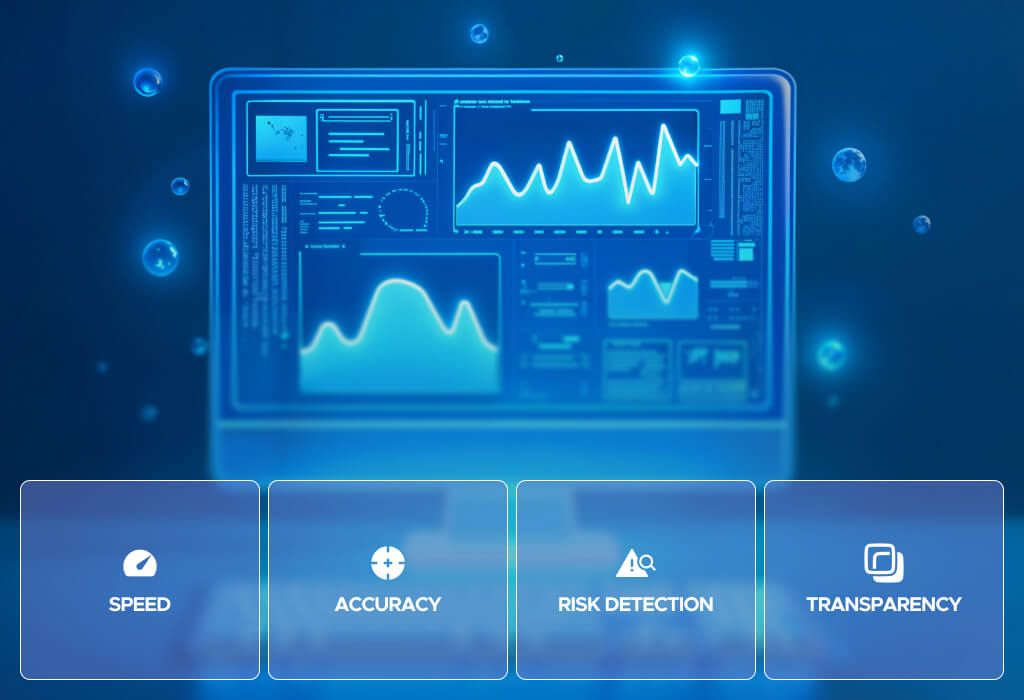Artificial intelligence is transforming mergers and acquisitions. What was once a slow and fragmented process is becoming more precise, structured, and scalable. AI now supports every stage of dealmaking by delivering efficiency, improving accuracy, and reducing uncertainty for decision-makers.
The Current State of M&A Processes
Global M&A activity continues to reach trillions of dollars annually, yet the core process remains highly manual. Legal teams must review large volumes of contracts, financial experts evaluate historical data, and compliance officers examine complex regulatory requirements. Each stage demands extensive hours and exposes transactions to risks of human oversight.
Errors in document review or valuation often lead to mispriced deals, unanticipated liabilities, or regulatory delays. Research shows that 60% of failed acquisitions cite poor due diligence or flawed assumptions as a cause. On average, the due diligence phase consumes up to 12 weeks, creating costs that can exceed millions of dollars for large transactions. Companies now seek methods to streamline this process while ensuring accuracy.
Where AI Fits in the M&A Lifecycle
Artificial intelligence is not limited to a single function. It is now present across the M&A lifecycle, from sourcing new opportunities to managing post-deal integration. AI applications include automated contract analysis, predictive financial modeling, and real-time compliance checks.
AI in Due Diligence

Due diligence demands review of contracts, intellectual property, liabilities, and litigation history. Manual review is both costly and time-consuming. AI-powered due diligence tools automate this stage by scanning thousands of pages, identifying critical clauses, and highlighting anomalies.
For example, AI can detect change-of-control provisions in supplier agreements, flag pending lawsuits, or compare employee contracts for hidden obligations. In cross-border transactions, AI can also review compliance with labor, tax, and antitrust regulations. By reducing manual workload, AI shortens timelines and improves the reliability of findings.
AI in Deal Sourcing and Target Identification

Identifying acquisition targets requires assessing thousands of companies across industries. Traditional sourcing relies on personal networks and static reports. AI M&A platforms can analyze structured and unstructured data, detect signals of market growth, and rank potential targets based on strategic fit.
For instance, AI can monitor patent filings to identify technology firms with strong innovation pipelines or scan regulatory databases to highlight pharmaceutical companies with approved treatments. This gives dealmakers early visibility into opportunities that may not yet be on the market.
AI in Valuation and Financial Modeling
Valuation determines whether a deal creates shareholder value. Traditional models depend on static assumptions that may not capture real-world volatility. AI enhances valuation by integrating real-time market data, customer trends, and competitor performance.
Machine learning can run thousands of stress-test scenarios, highlight sensitivity in assumptions, and uncover hidden correlations between indicators. In global transactions, AI can model currency risks and regional regulatory costs. This produces forecasts with higher accuracy and gives negotiators stronger leverage.
Benefits of AI Integration in M&A

The adoption of AI in mergers and acquisitions is reshaping how organizations plan, evaluate, and close deals. Its benefits go beyond efficiency to include improved accuracy, stronger governance, and long-term value creation.
Accelerated document review: AI systems can process thousands of pages of contracts and compliance documents within hours, compared to weeks of manual work. This not only reduces transaction time but also cuts legal expenses and minimizes bottlenecks during negotiations.
Improved valuation accuracy: Predictive models incorporate real-time economic indicators, competitor behavior, and consumer data, producing forecasts that more closely reflect reality. By highlighting sensitivities in financial assumptions, AI ensures valuations are robust and defensible in negotiations.
Proactive risk detection: Automated analysis identifies liabilities hidden in financial statements, litigation records, or regulatory filings. Early detection allows buyers to address risks before they escalate into costly post-closing disputes. This proactive approach also improves confidence among investors and lenders.
Greater transparency for stakeholders: AI provides boards, investors, and regulators with clear insights into deal assumptions and financial models. Standardizing reporting and reducing manual errors, it strengthens governance and supports faster approval processes.
Consistency across multiple transactions: Large corporations and private equity firms manage dozens of deals each year. AI-driven standardization ensures that reviews follow the same methodology, reducing variation and improving comparability across portfolios.
Beyond these measurable advantages, the impact of AI is strategic. Companies report not only faster closings but also higher success rates in achieving post-deal objectives. Automation of repetitive analysis frees human experts to focus on negotiation tactics, cultural integration, and long-term growth planning. In effect, AI shifts resources away from administrative burden and toward strategic value creation, helping organizations capture synergies more effectively.
Real-World Applications
Several industries already demonstrate the impact of AI-driven dealmaking. In the technology sector, AI tools help evaluate intellectual property portfolios and code repositories, accelerating software firm acquisitions. In pharmaceuticals, AI reviews regulatory approvals, clinical trial results, and patent protections, providing clearer assessments of long-term risks.
Private equity firms also leverage AI to screen thousands of small and mid-sized businesses. Algorithms identify firms with strong digital adoption or customer growth, enabling investors to prioritize high-potential targets. These practical uses confirm that AI is no longer experimental but a competitive advantage in active transactions.
Challenges and Limitations
Despite clear advantages, adoption of AI also presents challenges. Firms must ensure compliance, transparency, and cultural readiness.
Data Privacy and Regulatory Compliance
AI requires large volumes of sensitive data. Regulations such as GDPR and CCPA impose strict controls on collection and processing. Mishandling confidential information can lead to fines and reputational harm. Companies must establish strong governance and monitor AI-driven systems to remain compliant across jurisdictions.
Model Bias and Interpretability
Machine learning reflects the data on which it is trained. If data is biased, outcomes may mislead decision-makers. Transparency is critical: executives and regulators must understand how results are generated. Without interpretability, stakeholders may lose trust in AI-driven conclusions, limiting adoption.
Integration with Existing Tools and Culture
AI in M&A: A New Era of Efficiency and Accuracy
Many organizations still depend on outdated systems. Integrating AI into these frameworks requires investment in infrastructure. Cultural resistance is also a barrier. Professionals may perceive automation as a threat to their roles. Successful adoption depends on training, workflow redesign, and leadership support.
The Future of AI in M&A

Analysts forecast that by 2030, most transactions above $500 million will rely on AI support in every stage. Global investment in AI for corporate transactions is projected to grow at double-digit rates. Natural language processing will review negotiation transcripts, predictive analytics will forecast post-deal performance, and real-time monitoring will track integration progress.
Cross-border transactions will see major gains. AI can map complex regulatory differences, identify antitrust risks, and simulate compliance costs before execution. Secure collaboration platforms will allow teams in multiple regions to work simultaneously within AI-enhanced virtual data rooms, reducing delays and improving alignment.
In the long term, M&A capabilities will expand from operational support to strategic guidance. AI will help boards identify consolidation opportunities, forecast industry-wide synergies, and even simulate competitor responses to acquisitions.
Conclusion – A Smarter, Faster Deal Environment
Artificial intelligence is redefining how mergers and acquisitions are executed. From AI for contract analysis to predictive financial modeling, its impact is measurable: faster timelines, lower costs, and improved accuracy. Firms adopting AI now gain a decisive competitive edge in global dealmaking.
In this environment, platforms such as Boundeal demonstrate the future of transaction management. They create a smarter, faster deal ecosystem by combining advanced automation with practical usability. AI does not replace human expertise but strengthens it, enabling decision-makers to act with greater confidence, precision, and strategic foresight.




